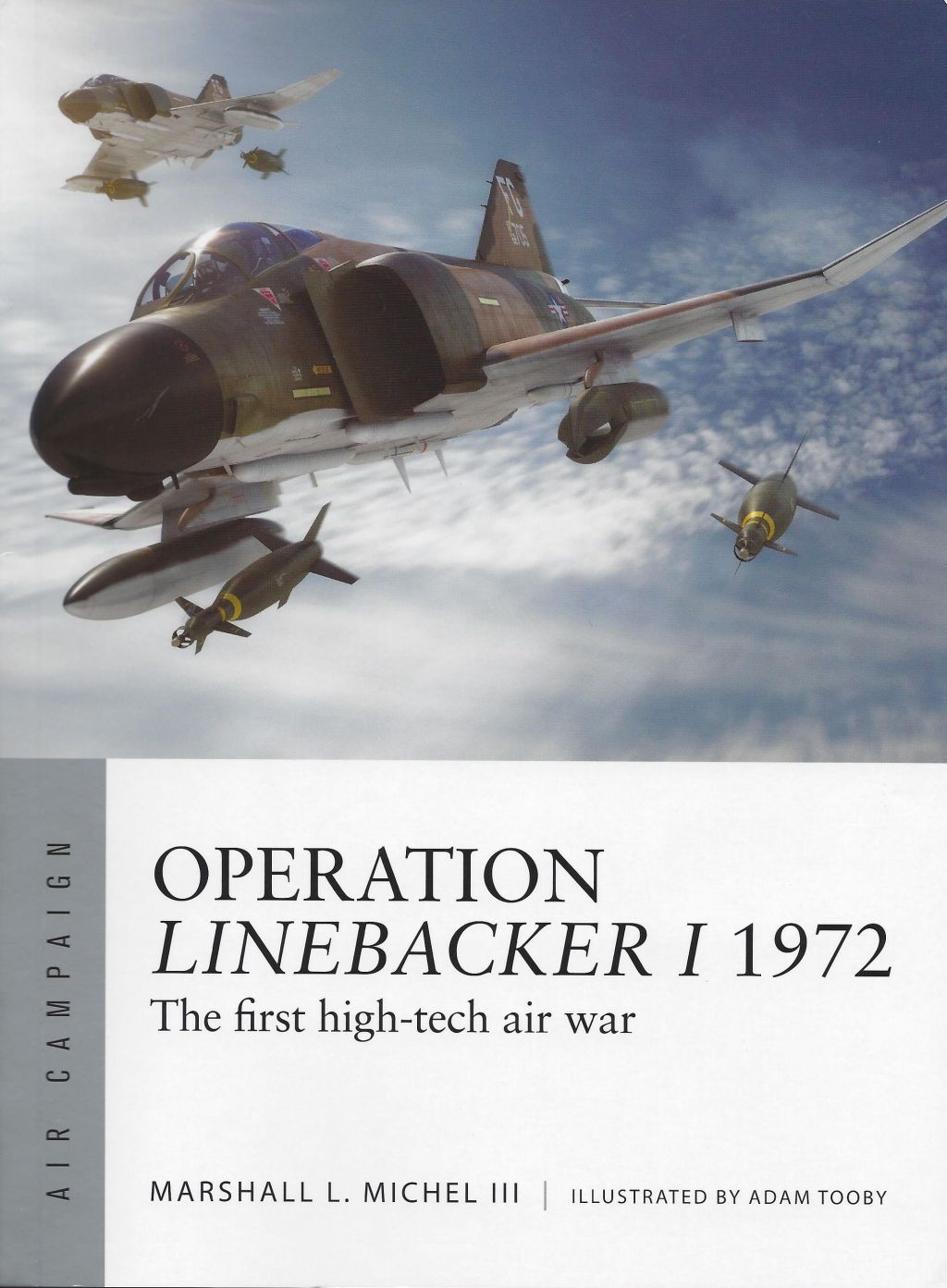Operation Linebacker I 1972
The Air Campaign Series from Osprey Publishing covers several operations from World War II in the European (Battle of Britain, Operation Crossbow and Sink The Tirpitz) and Pacific (Rabaul) Theaters, as well as operations during the Vietnam War (Rolling Thunder, Linebacker I and Linebacker II).
This volume explores the Operation Linebacker I from Spring of 1972 with the subtitle of “The first high-tech air war”. During early 1972, Peace Talks had broken down and the North Vietnamese were beginning to mass troops and supplies along the borders of North Vietnam, Cambodia, and Laos in preparation for an invasion of South Vietnam. The Introduction covers the situation building up to the invasion, as well as the miscalculations of the PAVN (People’s Army of Vietnam) in having never fought a conventional war regarding the vulnerability of supply lines, troops and armor to air power. In addition to the nicely illustrated maps and tactical procedures, there are three two-page painted illustrations that are just spectacular, including the F-4s used for the cover art, three incoming A-6s on a low approach over water and a MiG-21PFM firing a missile at a target in a flight of F-4s.
The next section covers the Chronology from mid-1971 with the political and military events unfolding through the time period to the conclusion of Linebacker I operations. Beginning with the planning and staging operations to the execution of the offensive attacks by the North, as well as the defensive responses of South Vietnam and the US Air Force and Navy. The next two sections cover the capabilities of both sides, from the advances in technological weapons for the US to the strength of the North’s missile defenses. The US forces had diminished in preparation for withdrawal if the Peace Talks had been successful, but also during that time, the technological advances had led to the development of PGM (Precision-Guided Munitions), more commonly known today as “smart bombs” used by both the USAF and Navy. Additionally, methods and equipment to counter the SA-2 surface-to-air missiles had improved dramatically. The North countered with a new heat-seeking, shoulder-fired SA-7 Strella missile but was hampered by the limited availability. To deal with the chaff corridors that protected the bomber attacks, the North increased the MiG forces to attack the slow and cumbersome formations.
The next section called “The Campaign” fills the bulk of the book at some 70 pages in length. It breaks down each operation with strategic and tactical objectives, highlighting the aircraft and equipment, service branch(es) involved, and the expected compared to the achieved results. While air combat is mentioned and kills ratios and tallies reported, these are mentioned only as part of the tactical explanations with very few, if any, narrative reports on the actual sorties. This section goes into depth covering the day-to-day operations including the ground support through the AC-119s and AC-130s, the support of the ARVN troops by helicopter and fixed-wing air-drops of equipment and supplies, and the technological advances in ground attack and air-to-air combat capabilities.
The final section of the book is “Analysis and Conclusion”. The success of the campaign can be credited to the effective use of chaff corridors to negate SAMs and the revamping of the TACS (Tactical Air Control System) to better control losses during bombing missions, as well as the AN/AVQ-10 Pave Knife pod which allowed the use of PGM (Precision Guided Munitions, i.e. laser-guided bombs) for attacking specific targets with little to no collateral damage. Another consideration was the strengths and weaknesses discovered during the operations which led to major changes in the air-to-air combat training. This consideration led to the development of the USAF Red Flag air combat training program as the Navy decisively demonstrated the effectiveness of its already-in-use Top Gun program. The old joke about “bringing a knife to a gunfight” aptly describes the conventional warfare plan of the PANV, as their invasion consisted of troops and armor that were expected to collectively overrun the defenses of the South Vietnamese forces. US air power was underestimated, even though withdrawals were already underway, and the capabilities and speed of implementation were completely unexpected.
While I personally would have enjoyed more narratives from pilots and other participants, the intent of the book is to provide an overall explanation of the strategy and tactics, as well as the development of more electronic capabilities and counter-measures of the modern military air forces. The book succeeds in accomplishing that purpose well. I would highly recommend this book for anyone with an interest in historical aviation or more specifically the Vietnam War, and especially to those interested in the early technological development of modern air power. I would like to express my sincere gratitude to Osprey Publishing for providing this book for review.







Comments
Add new comment
This site is protected by reCAPTCHA and the Google Privacy Policy and Terms of Service apply.
Similar Reviews